Akira Suzuki
Biographical
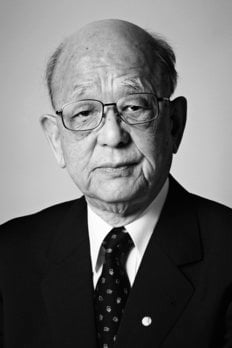
I was born on September 12, 1930, in Mukawa – a small town in Hokkaido, Japan. I attended primary school there and entered a secondary school in Tomakomai, which is home to one of the biggest paper companies in Japan. At high school, I was interested in mathematics. Consequently, when I entered Hokkaido University in Sapporo, I wanted to learn more about the subject. In my freshman year, I became interested in organic chemistry after reading Textbook of Organic Chemistry by L. F. Fieser and M. Fieser. Finally, I decided to major in organic chemistry.
The title of my doctoral thesis was Synthesis of the Model Compounds of Diterpene Alkaloids. In the study, I used organometallic compounds, Grignard reagents and organozinc compounds as synthetic intermediates and realized that organometallic compounds are interesting and versatile intermediates for organic synthesis. After completing the PhD program at Hokkaido University’s Graduate School of Science in 1959, I was employed as a research assistant in the Chemistry Department. Two years and six months later in October 1961, I was invited to become an assistant professor of the Synthetic Organic Chemistry Laboratory at the newly founded Synthetic Chemical Engineering Department in the Faculty of Engineering. In April 1973, I succeeded Professor H. Otsuka of the Third Laboratory in the Applied Chemistry Department. In total, I have spent 35 years at Hokkaido University as a staff member – 2 and a half in the Faculty of Science, and the other 32 and a half in the Faculty of Engineering. Other than about two years of study in America and a few months in other places overseas, most of my life has been spent at the Faculty of Engineering. Including my nine years as a student, the majority of my life has been at Hokkaido University. After my retirement from the university in 1994, I served at two private universities in Okayama Prefecture – Okayama University of Science and Kurashiki University of Science and the Arts – before retiring from university work in 2002. In the following, I would like to describe a few memories of my life in chemistry.
A FEW MEMORIES
Professor Herbert Brown and Purdue University
As I reflect on these years, I see that there were many difficult periods as well as joyful ones. Memories of tough, trying experiences tend to fade with time. I think now mainly about the fun things, and here I describe a few memories that I have from my work.
It was a Saturday afternoon in 1962 when I visited the Maruzen bookstore in Sapporo. As I browsed the chemistry books, I discovered a very unacademic-looking volume bound in red and black. This book was Hydroboration by H. C. Brown, the 1979 Nobel Laureate in Chemistry. I took the book in my hands and began looking through its pages to find words written in Professor Brown’s unique style. I purchased the book and returned home. I still remember clearly picking it up after dinner that evening and not being able to put it down. It is not very long, but it remains one of the few scholarly books that I have stayed up all night to read. At the time, I had just transferred to the Faculty of Engineering from the Faculty of Science, and I wanted to begin research in a fresh field at my new workplace. This is perhaps one reason why this book had such an impact on me.
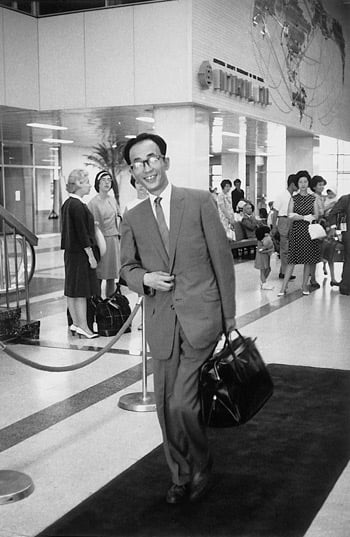
Figure 1. Leaving Tokyo/Haneda Airport for the U.S., August 1963.
Inspired by this experience, I went to Purdue University in Indiana in August of 1963 (Figure 1) and spent almost two years at Professor Brown’s laboratory researching the newly discovered hydroboration reaction as a postdoctoral research associate (Figure 2). It was my first time in a foreign country, and one of the things that left an impression on me was the affluence of America at that time. For instance, one American dollar was worth 360 yen. My monthly salary as a doctor researcher was four times what I received even as an assistant professor in Japan. There was also little difference in diet between the rich and the poor. I found many such things that were unimaginable in Japan. Purdue University has a strong relationship with Hokkaido University. In the past, the former president of the university, Professor S. Ito, studied at Purdue. Professor S. Nomachi and Professor T. Sakuma were at Purdue at the same time as I was.
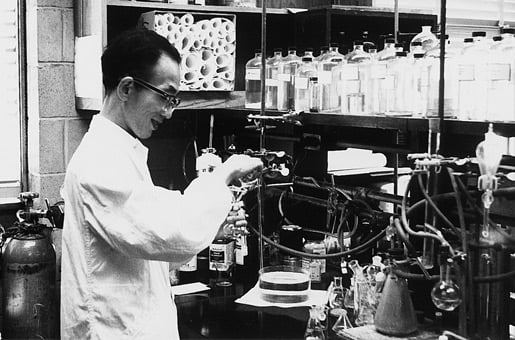
Figure 2. Working at Professor H. C. Brown’s Lab., Purdue Univ., August 1964.
I learned many things from Professor Brown, including his philosophy toward research, but there is one thing he said that I recall with particular clarity: “Do research that will be in the textbooks.” It is not easy to do such work, but this has remained my motto. Professor Brown was 51 years old and was an extremely active researcher. He visited Hokkaido University three times. I had the opportunity to meet him and Mrs. Brown more than ten times (Figure 3), but unfortunately we lost them in 2004 and 2005.
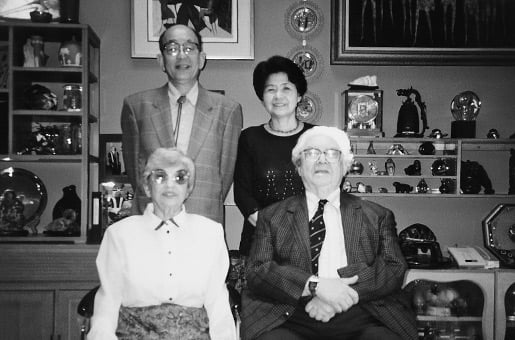
Figure 3. With Professor and Mrs. Brown at their home in Indiana (USA), June 1995.
Hydroboration is the reaction of alkenes with borane to produce organic boron compounds, which differ from other organometallic compounds in that they are chemically inactive, particularly in ionic reactions. For example, organic boron compounds are stable in the presence of water and alcohol, and do not undergo Grignard-type reactions. It was therefore thought that such compounds would be unsuitable as synthetic intermediates. Between 1963 and 1965 when I was at Purdue, there were more than 30 doctoral researchers and graduate students from all over the world at the Brown Lab. Many of these friends shared the opinion that boron compounds were inactive. In contrast, I thought that the stable character of organoboron compounds could be an advantage in some cases. For example, they could be used in the presence of water without any special precautions. I considered to find some way to use these compounds in organic reactions, and created a new research plan upon my return to Japan in April 1965 (Figure 4).
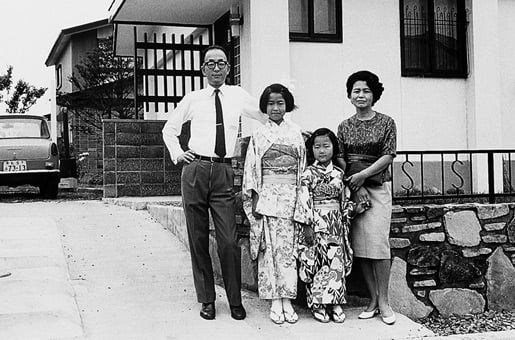
Figure 4. The Suzuki family, October 1969.
DISCOVERY OF ALKYL RADICAL FORMATION FROM R3B
At the time, I focused on three characteristics of organoboron compounds. First, compared to other organometallic compounds, the difference in electronegativity of the C-B bond is small, making it an almost-perfect covalent bond. Second, boron atoms have an empty ρ-electron structure, meaning that they may be susceptible to nucleophilic reagents. This suggested that the compounds might undergo the reactions shown by Eq. 1. Third, studies of the C-B bonding distance showed that it was almost equal to the C-C bonding distance.
In consideration of these three points, I decided to study the reaction of organic boron compounds with α, β-unsaturated ketones. In other words, I hypothesized that the intermediate (I) in Eq. 2 could be obtained through a quasi-hexagonal transition state, which could be hydrolyzed to give a saturated ketone. When we examined methyl vinyl ketone in the reaction, we found that the predicted corresponding saturated ketone was produced with a quantitative yield (Eq. 2). We obtained these results in 1966, and when I notified Professor Brown of our findings in a letter, he was extremely interested. He told us that he wanted to explore the results at Purdue as well. I supported his proposal, and we continued to study α, β-unsaturated ketones in Hokkaido, while α, β-unsaturated aldehydes were investigated at Purdue. We analyzed the scope of the reaction and tried several types of α, β-unsaturated ketone reactions, finding that each produced favorable amounts of the corresponding saturated ketones at room temperature. Although we discovered that compounds with a substituent in the β position (such as II compounds) did not react at room temperature, we found that the expected proportions of products were formed in a THF (tetrahydrofuran) solution at reflux temperature. I received a letter from G. Kabalka (now a professor at the University of Tennessee), who was then a graduate student performing related research at Purdue. According to the letter, something similar had been found with α, β-unsaturated aldehydes. None of the corresponding saturated aldehydes were produced by the reaction of compounds such as III, which had a substitution group in the β position, even though many similar compounds (such as acrolein) reacted readily at room temperature. I proposed that each laboratory confirm the results of the other, and we began experiments on III, finding that the reaction proceeded in THF at reflux temperature. However, subsequent experiments at the Brown Lab did not manage to reproduce our reaction. I remember a sentence in the letter I received from Professor Brown reporting their results: “Chemistry should be international. Why do we have such a big difference between two places, Sapporo, Japan, and West Lafayette, U.S.A.?”
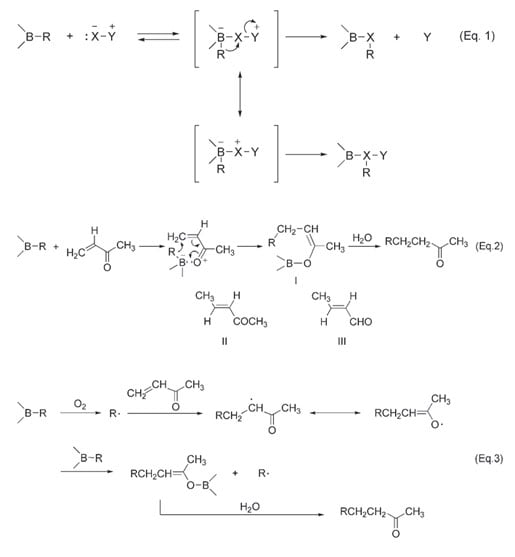
When we looked more closely at these contradictory results, we discovered something quite unexpected. A trace amount of oxygen contaminating in the nitrogen gas we used in our reaction system was catalyzing the reaction. At the time, we knew that organoboron compounds reacted with oxygen, so both we and the Brown Lab conducted the reactions in nitrogen gas. In our laboratory, we used nitrogen purchased from Hokkai Sanso (now called Air Water Inc.), which we further purified ourselves. Nevertheless, trace amounts of oxygen were still present in our nitrogen gas. The oxygen acted as a catalyst and promoted the reaction. In the U.S., extremely pure nitrogen could easily be purchased in those days, and did not contain sufficient amounts of oxygen to cause the reaction.
From such unexpected results, we found that with small amounts of oxygen catalyst, organoboron compounds produced alkyl radicals. Furthermore, the reaction followed the radical chain mechanism as shown in Eq. 3 rather than the coordination mechanism we had inferred previously (Eq. 2).
Serendipity
The concept of serendipity often crops up in research. Serendipity is the faculty or phenomenon of finding valuable or agreeable things that were not being sought. I believe that all researchers can be serendipitous. However, in order to make the most of such opportunities, a researcher must have the humility to see nature directly, an attentiveness that does not let even the dimmest spark escape, and an insatiable appetite for research. Some amount of luck is also needed, but we can say with certainty that little will come of half-hearted efforts.
Quick publication
In 1970, we were performing experiments to directly produce carboxylic acid from organoboron compounds. One possibility we explored was to use complexes derived from such compounds and cyanide ion, which react with protonic acids. We were not able to obtain our intended result, but discovered that these cyano complexes produced symmetrical ketones with a good yield when they reacted with electrophilic reagents like benzoyl chloride. Nonetheless, I was busy preparing for a presentation at an international conference to be held in Moscow in 1971, and we left for the conference without finishing our paper on it. After I had successfully given my invited lecture, I left the lecture hall to quench my thirst with a glass of water. At that time, a tall foreign man introduced himself to me. It turned out to be Professor A. Pelter of Manchester University in the U.K. He later transferred to the University of Wales in Swansea, and served as the chair of the Department of Chemistry as well as the Vice-Chancellor of the university. At our first encounter in Moscow, I had no idea that he was studying organoborane chemistry. We spoke about many things that day, and to my surprise, I learned that he had already completed the very research that we had been working on, and that his results had been published the previous month in Chemical Communications. As a result, our work remains unpublished. Today, that reaction is sometimes called the Pelter reaction. Knowing about our situation, Professor Pelter sympathizes with us and consoles us, but no one else knows anything about it. We learned from this experience. When doing research, we must keep three things in mind. First, we must study existing literature carefully and comprehensively. Second, we need to be aware that other researchers, near and far, are thinking about the same things that we are. Third, we must quickly publish papers on our results (rather than just giving oral presentations).
Tragic accident
When I remember that conference – the International Conference on Organo-Metallic Chemistry in Moscow 1971 – I cannot help but think of the tragic accident in which an ANA passenger jet collided with a Japan Self-Defense Force aircraft in the skies above Shizuku-ishi in Iwate Prefecture. On that day, I had flown from New Chitose Airport in Sapporo to Haneda Airport in Tokyo to stay the night before boarding an Aeroflot plane to Moscow the next day. I took a Japan Airlines flight in the afternoon, unaware that the plane that had departed only 30 minutes earlier would be involved in such a terrible accident. Knowing nothing of the tragedy, I landed at Haneda and headed to the Haneda Tokyu Hotel near the airport to stay, and then learned about the accident. All passengers and crew – 162 people in all – were killed.
Haloboration reaction
Next, our group carried out research on the synthesis of organic compounds through haloboration. This research was based on the discovery that a certain type of haloborane derivative adds to terminal carbon-carbon triple bonds. The reaction was discovered in 1981, but we first released part of this research in the United States in 1982. That fall, the American Chemical Society hosted a symposium in Midland, Michigan on organic synthesis using organoboron compounds. I was one of the special invited speakers, and was preparing to travel to the U.S. when I received a letter from Professor Brown. It was an invitation to visit Purdue to give a lecture on haloboration before the symposium. Professor Brown listened to my presentation intently, and raised his hand to comment the moment I finished speaking. He said that his group had studied the possibility and usefulness of the same reaction at almost the same time as we had. They had looked at haloboration reactions for acetylene compounds, but had only investigated the reactions of internal acetylenes as substrates. Their work was unsuccessful, and they ended the research. The goddess of fortune is capricious, indeed.
Over the years, I have had a variety of different experiences. I have made many friends at Hokkaido University’s Faculty of Engineering, especially among many of the people who continue to work at the Third Laboratory of the Applied Chemistry Department and the Organic Synthetic Chemistry Laboratory in the Synthetic Chemical Engineering Department. They have allowed me to enjoy a long career in research. I conclude by expressing my sincere gratitude to these students and colleagues.
I have received a number of awards for my work, as listed below.
| The Chemical Society of Japan Award, 1989 |
| The Society of Synthetic Organic Chemistry Japan, Special Award, 2004 |
| The Japan Academy Prize, 2004 |
| The Order of the Sacred Treasure, Gold Rays with Neck Ribbon, 2005 |
| P. Karrer Gold Medal, 2009 |
| The Order of Culture of Japan, 2010 |
| H. C. Brown Award of the American Chemical Society, 2011 |
This autobiography/biography was written at the time of the award and later published in the book series Les Prix Nobel/ Nobel Lectures/The Nobel Prizes. The information is sometimes updated with an addendum submitted by the Laureate.
Nobel Prizes and laureates
Six prizes were awarded for achievements that have conferred the greatest benefit to humankind. The 12 laureates' work and discoveries range from proteins' structures and machine learning to fighting for a world free of nuclear weapons.
See them all presented here.
